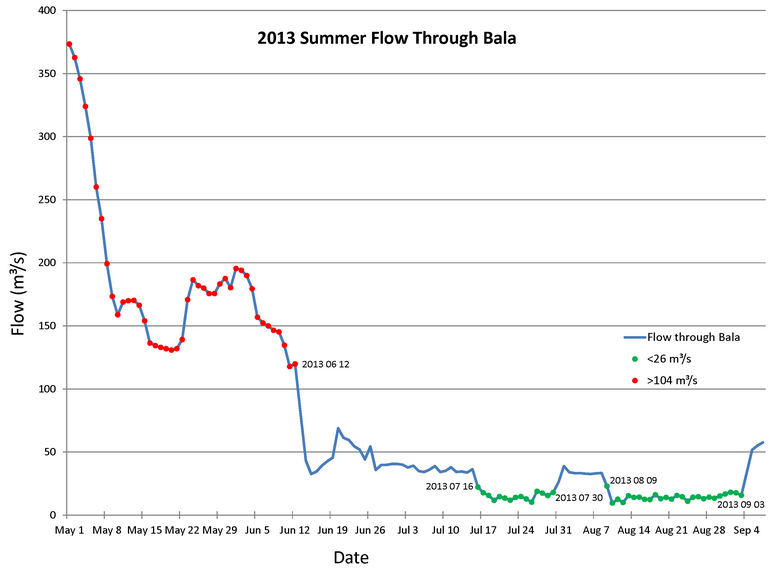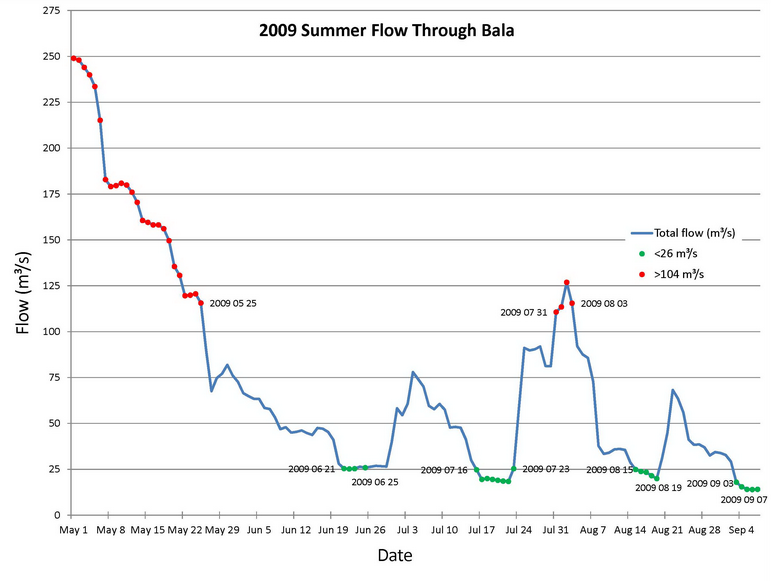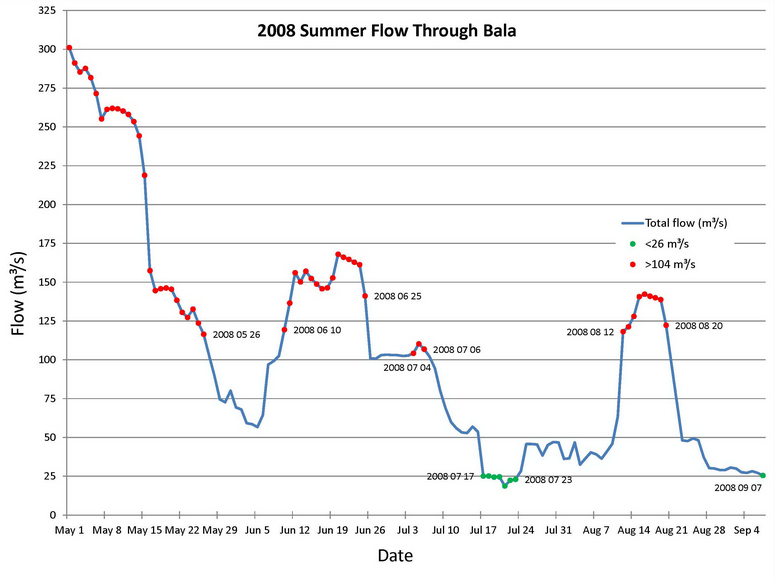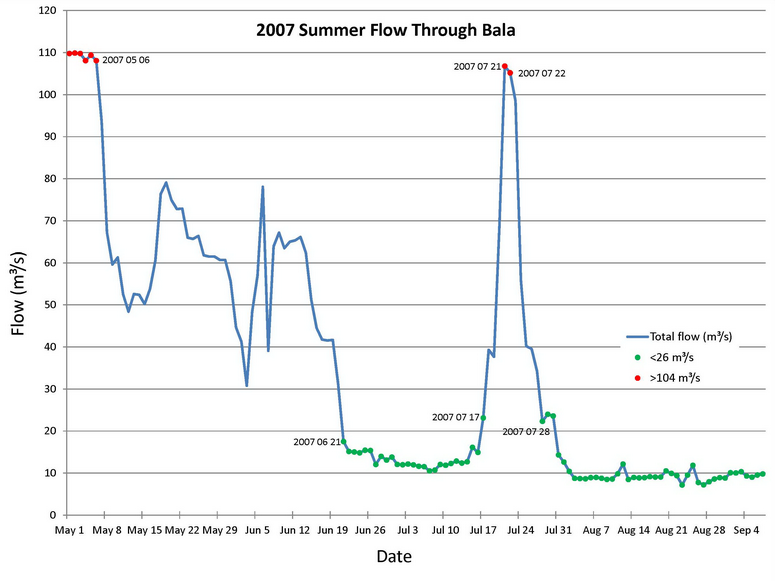Summary
The proponent claims that their flow simulaton on the last page of their 2012 Environmental Screening Report Addendum (here) would only occur during spring freshet. They are wrong.
While we provided detailed analysis in this article, perhaps the figures below will more clearly show that not only would the proposed generating station frequently operate at full capacity during the summer months (from May 1 to the first week of September, when people would be in the water just a few feet away from this treacherously-turbulent water), but the proposed station would also operate in a cycled mode. Both of these situations would be extremely dangerous, as running the proposed generating station:
- At full capacity – the flow of water would be 96 m³/s – is over three times the flow through the Bracebridge Falls generating station (and people and boats are not anywhere near that).
- In a cycled operation means that the proposed station would be completely stopped in the morning and then silently and without warning begin operation at about noon most summer days, running with a flow of about the full capacity of the Bracebridge Falls generating station.
The graphs below show the actual historical flow of water through Bala during the summer months. As you can see, there is a huge day-to-day variation in flow, so during the in-water recreational summer months, the proposed station’s operation would be everything from completely stopped to running at full capacity – it all depends on how much rain there is farther up the watershed in previous days and many other factors people nearby would not know. The proposed station’s operation would be automatically and remotely-controlled and there would not be an Operator in the proposed station. So during the summer, both locals and visitors would sometimes see the station stopped, thinking there’s no danger, but this would often change within minutes.
Detail
The figure below shows the daily flow of water (in cubic metres per second) through Bala for the summer of 2013, as recorded by the Water Survey of Canada. The red dots are the days the flow through Bala was more than 104 m³/s, which are the days the proposed generating station would have operated at its full capacity of 98 m³/s – since there would be an additional 4 m³/s through the Mill Stream generating station and 1 m³/s over each of the Bala north and south falls (which is the paltry Scenic Flow offered by the proponent).
That is, the red dots are the summer days when the proponent’s flow simulation would have occurred. The proponent apparently doesn’t realize their own 98 m³/s flow simulation (which was used in our figure) would occur frequently during the summer, not just during spring freshet.
As shown below (click on it for a larger view), in 2013, the proposed station would have operated at full capacity every day from spring freshet until June 6, 2013. The green dots highlight the days that the proposed generating station would have operated in the also-dangerous cycling operation (from July 16 to 30, and from August 9 to September 3, 2013).
You might think that 2013 was an unusual year, so three other years are presented below. For example, for 2009, the proposed station would have run at full capacity until May 25, 2009 and also from July 31 to August 3 – now how surprising is that, high flow in the middle of the summer. It all depends on how much it rains, and many state that the main impact of global warming is that weather is becoming more volatile. But as the green dots show, on 12 days before and on 10 days after this full capacity operation, there would have been low flow, requiring cycled operation.
As shown below, for 2008, the proposed station would have run at full capacity to May 26, 2008, and many days in June and July, and again in August. Cycling operation would also have occurred in July and on September 7.
In 2007, the station would have run at full capacity to May 6, 2007 and also on July 21 and 22. And cycling operation would have occurred from June 21 to July 17 and again from July 28 to September 7, 2007.
Clearly, the proponent’s 98 m³/s flow simulation would occur for many weeks every summer, not just during spring freshet.



